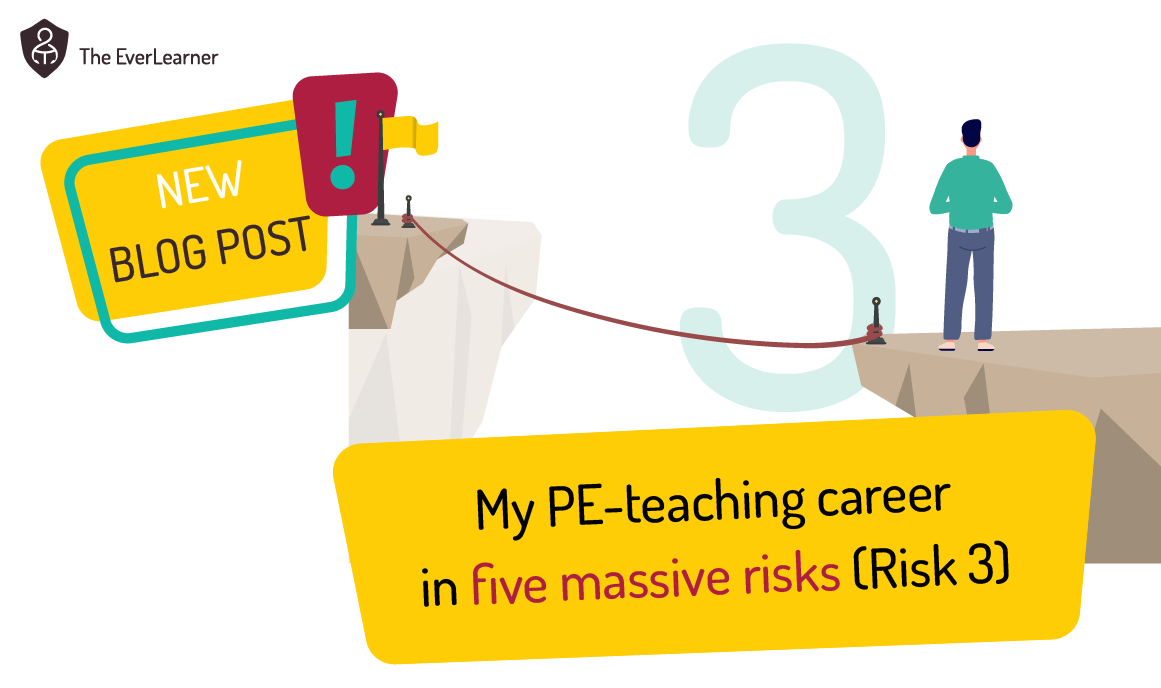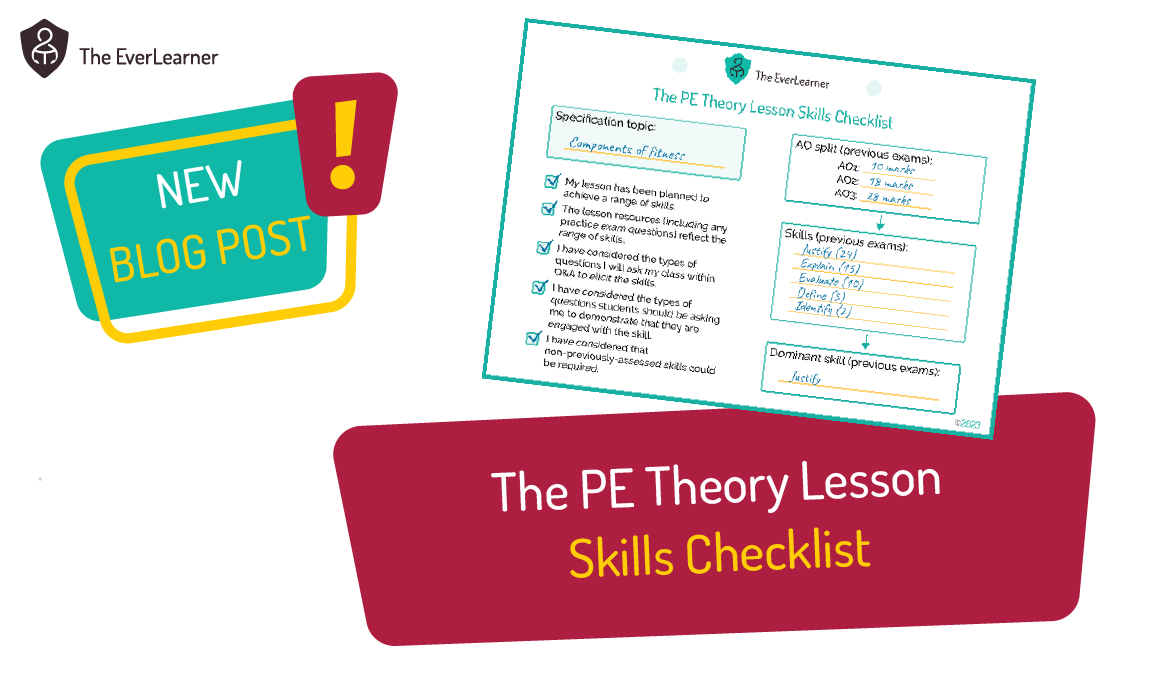PE Classroom Formats - Which one to choose and why
This blog is aimed at PE teachers and PE course managers of GCSE PE, A-level PE, BTEC Sport, Cambridge Nationals in Sport Science and Sport Studies and every other type of classroom-based PE colleague. My aim is to challenge you regarding how you set your classroom up and also challenge some of the assumptions that we might all make about PE classrooms and how they operate.
Let’s start at the beginning. We will first look at a rank-and-file classroom. You may find the terminology of “rank-and-file” slightly antagonistic. It shouldn’t be. State education, established in 1870 by the Forster Education Act was specifically designed to teach obedience and conformity in the pursuit of the development of good soldiers.
The rank-and-file classroom
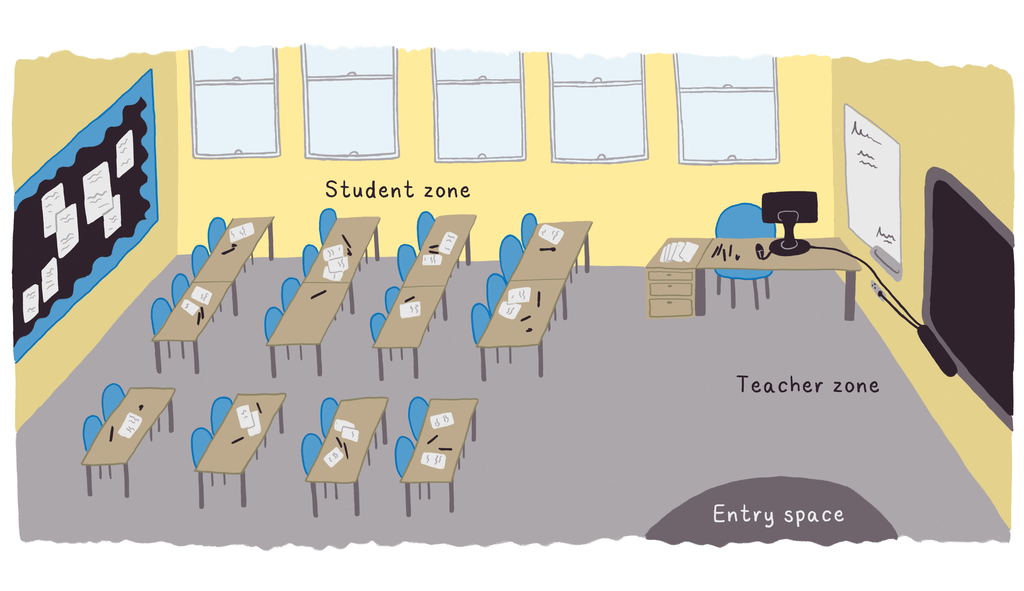
I am pretty confident that you will be familiar with this classroom. It is exceptionally common: probably the most common format in secondary schools. There are slightly different derivatives of it, of course, including individualised desks instead of rows and gaps between tables in different positions but, in essence, the classroom is set up as follows:
- Teacher zone at the front
- Students in rows (ranks)
- Students facing forwards
- Limited access for the teacher to access the student zone
- Very low likelihood of students entering the teacher zone apart from on odd occasions
So, we can be very confident about what this classroom is designed for:
Whilst I agree that broadcast teaching has a part to play in PE classrooms, I also want to challenge its use. This classroom is specifically structured to cause broadcast lecturing as the core experience. Broadcasting is the purpose, the raison d'etre, of this space and we need to ask ourselves if this is what we aim to achieve.
There are other issues with this PE classroom too. Space ownership is an issue. There are – as in almost any classroom format – lots of hidden spaces from the PE teacher’s eyes. PE students “own” the student zone and when the PE teacher enters it (to support an individual PE student, say) they must turn their back to at least some students unless they are working with the very front or back row. This can be an issue and student engagement can decrease without the teacher’s oversight.
We also have the awkwardness of a front and back row. Assuming you use a seating plan, you will need to decide in what ways you wish to use these two rows. Typically, teachers will use the front row to keep more challenging students close to them, although there are many other reasons. The back row is often seen as a privilege and the teacher needs to decide who they “trust” to study from there. However, I find that the middle rows are the most challenging ones because they are less discernible. They are “a mass” and identifying the details of what is occurring is challenging.
Finally, and probably the biggest weakness of all of the rank-and-file classroom, is that it does not conveniently promote collaboration between learners. The classroom is, in my opinion, designed for control rather than collaboration. When sitting a mock exam, this is fine but when trying to develop the deepest and broadest PE learning possible, it is typically not appropriate. I will dwell on this more in future posts.
Many teachers, some of them with a very significant online presence, stand up for the rank-and-file classroom. They claim it is best for control. They claim it is the simplest or default model. They may be right but I want us to remember what our aim is:
Look at the word “causes”. That word matters. Our aim should not simply be to “control” students but to put rocket boosters under them and help them to fly. Unlike the colleagues I anonymously refer to in the previous paragraph, I will never, ever settle for control being my overarching aim.
So, with that little bit of controversy behind us, let’s move on. What are the alternatives to the rank-and-file classroom? We’ll start with a simple twist, that being the horseshoe.
The horseshoe classroom
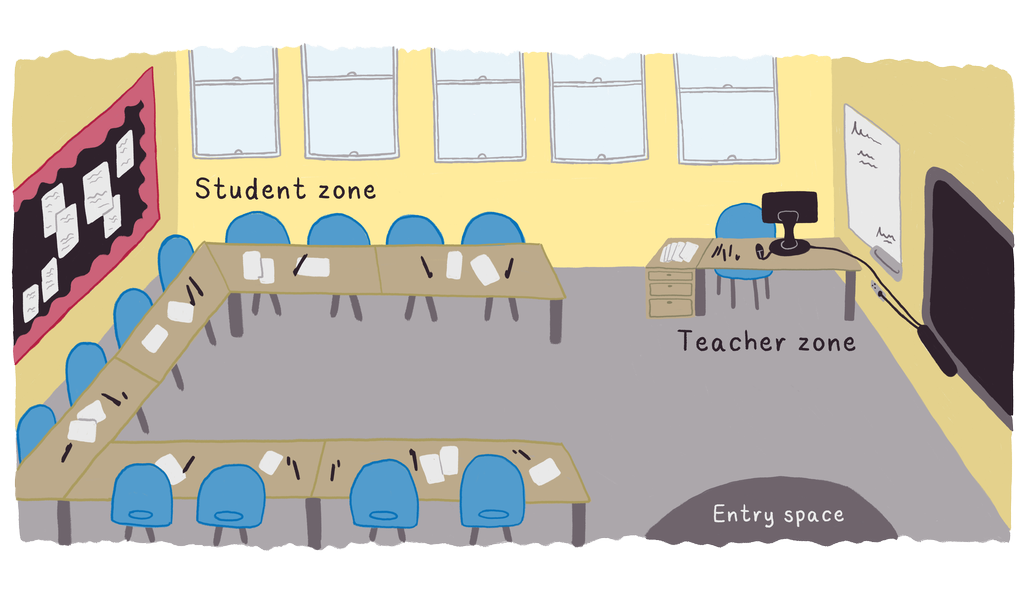
When you look at the horseshoe, you will probably think that is limited in terms of student numbers. There is some truth to this but not to the degree that you may first consider. In essence, the horseshoe takes all of the space that is left unused in the rank-and-file classroom and condenses it in the centre of the student zone. This means that a teacher can now extend their teacher zone:
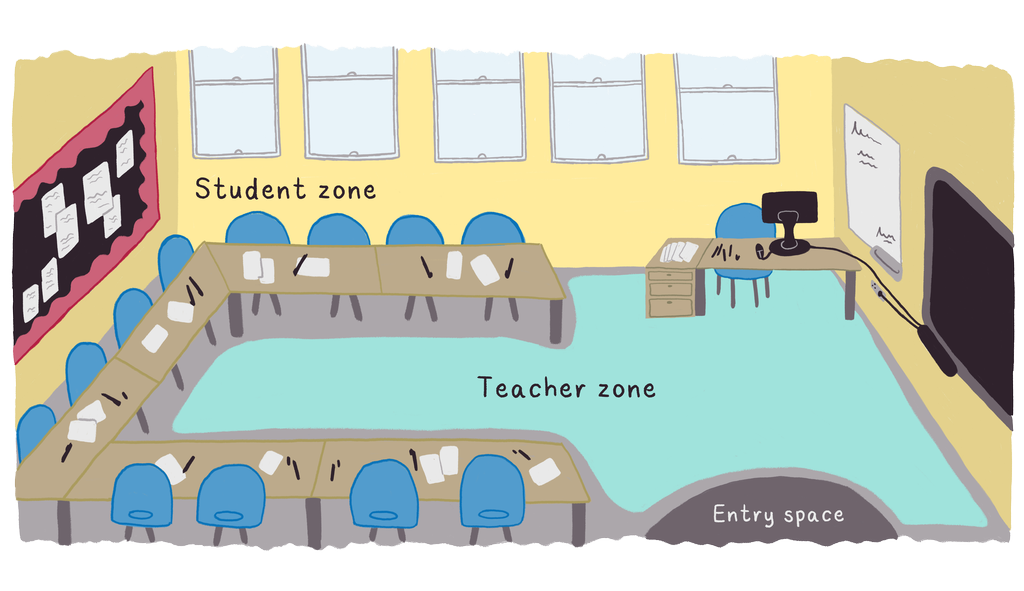
The PE teacher can now stand right next to every learner and instruct as they see fit. The teacher has reclaimed a large proportion of the PE classroom. The teacher is no longer limited to the frontal teacher zone with occasional forays into the ranks of learners. Here, in the horseshoe, the teacher is the occupier.
There are other strengths to the horseshoe too. Splitting the group into three is now natural. Causing cross-room debate is natural. Pair work is natural. In-class demonstrations of movement or principles are natural because of the space created. But there are weaknesses too. Some students remain a long way from the presentational area at the front of the room. The students in the back corners find it harder to see the front. And group work, other than with pairs or threes is not overly natural. However, the structure is a compelling alternative to the rank-and-file, which shares all of these weaknesses and many others.
The horseshoe also has some interesting little quirks. I recommend experimenting with the following when using this classroom format:
- Try not to “give away” the space behind the students’ chairs. Try to enter that space when possible. Let the students know that you belong there too.
- The back of the classroom behind the back-row middle student is actually the best place to view all students within this classroom. Use this to your advantage when students are activated in learning tasks.
- When supporting students with individual learning, try to help from the student side of the desks. Otherwise, you will have your back turned to the majority.
All in all, the horseshoe is worthy of your consideration and you should use it for instruction and quiet work. You should also use it when you need students to work in pairs or debate across the room. Finally, you should use it when you need some classroom space to demonstrate movements or techniques.
The console classroom

In the console classroom, desks are arranged so that either four or six PE students are sat around a console facing one another but with all four/six students still facing forward. To emphasise this, I will take table 1 from above and provide an illustration of it below.
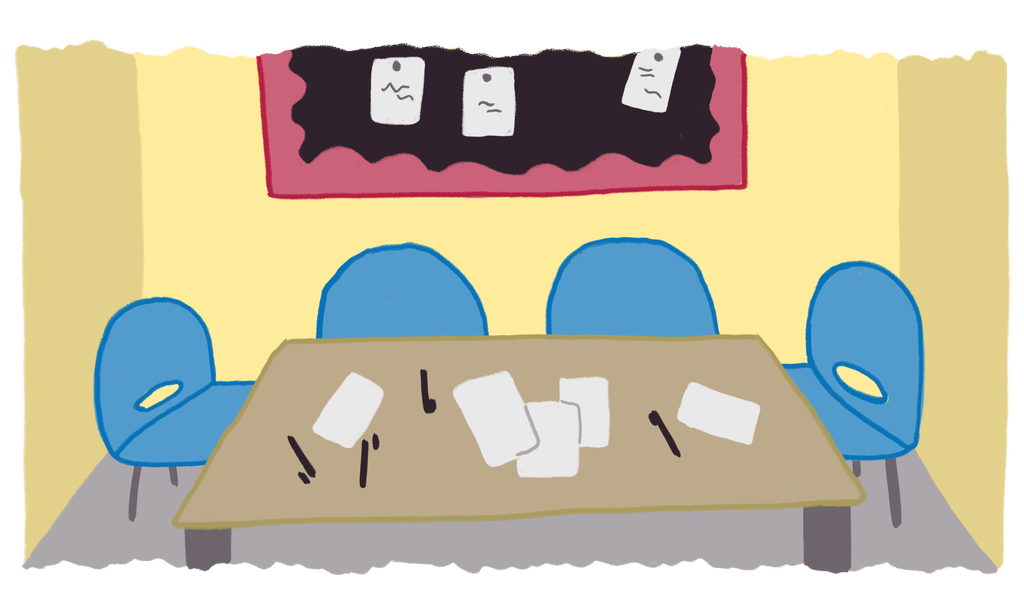
As you can see, all students are facing one another and are facing forwards. This allows the teacher to instruct but also to gain the major advantage of this format which is group interaction and collaboration.
In a console classroom, PE teachers can instruct from the front, they can provide collaborative opportunities on each console or even have consoles compete with one another in an appropriate methodology. In this sense, a PE teacher’s seating plan becomes more meaningful because teachers need to place PE students into groups based on their learning performance and tendencies, not simply as a control vehicle.
In the console classroom, students look one another in the eye. Do not underestimate this as it is almost absent in the rank-and-file classroom. There is a sense of a collective but also of division between the consoles. This can be played with, smartly, by the PE teacher.
Having collaborative structures is not going to cause deep learning. We, of course, must use appropriate tasks and instructions to get students to work collaboratively and you can read about many of these in other blog posts such as my series on questioning techniques or my post on evaluation - How I get my students evaluating part 1 and part 2.
In the console classroom, teachers can also meander much more conveniently. There develops an Ikea-store-like-pathway between consoles and this, much like the horseshoe, provides the PE teacher with the ownership of the space or, at the very least, the normality of entering all parts of the PE classroom.
I should declare at this point that, during lessons that feature centralised instruction from me, consoles are my go-to structure. I am very partial to this structure just as others are to other formats. However, the key point is this one:
Once again, my/our aim is:
The boardroom (classroom)
I have used the boardroom extensively, especially with examination or coursework groups. The physical structure of the room is as follows:

The boardroom causes every student to be able to look into the eyes of every other student assuming that they are on a different side. Therefore, the boardroom is very useful for debate-based learning but also for grouping classes into four groups.
Furthermore, The boardroom tends to feel quite controlled. I am unsure exactly why this happens but I have found boardroom lessons to be very effective with individual work such as comprehension exercises, reading or writing. Perhaps this happens because the dominant behaviours of the groups as a whole are seen by all other students so, as long as there is a critical mass of PE students studying, this triggers others to do the same. I believe, anecdotally, that this is the case more so than in other classroom formats.
The Boardroom can also involve tweaks and adaptations. Take a look at this as an example:
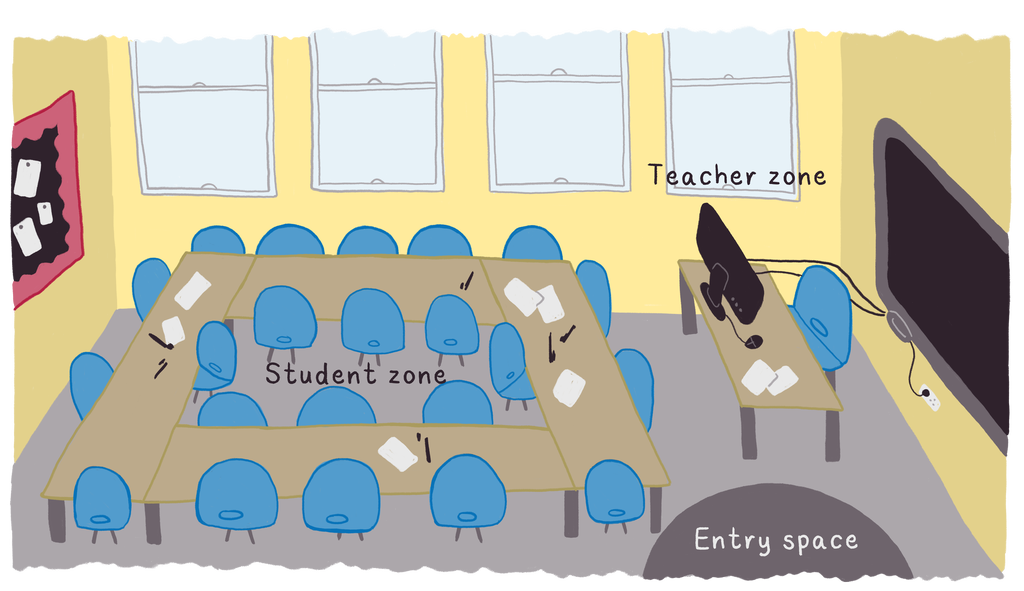
In this variation, students occupy the inner and outer of the conference table. This structure is excellent for small group work but also for rotations. Consider, for example, that the inner circle can move clockwise, say, and this naturally produces different pairings and groups or even study partners. I have used the model extensively with simple competitive structures in classrooms. For example, playing memory games such as gauntlet or rally robin.
Once again, we are structuring the PE classroom to cause the learning activities that we seek. Our model is not assumed nor accidental. Every resource in our PE classroom is meaningful, from the desks, the chairs or the spaces to the technology.
Now, let’s make one more amendment to the boardroom and consider it in one other way. Take a look at the image below:
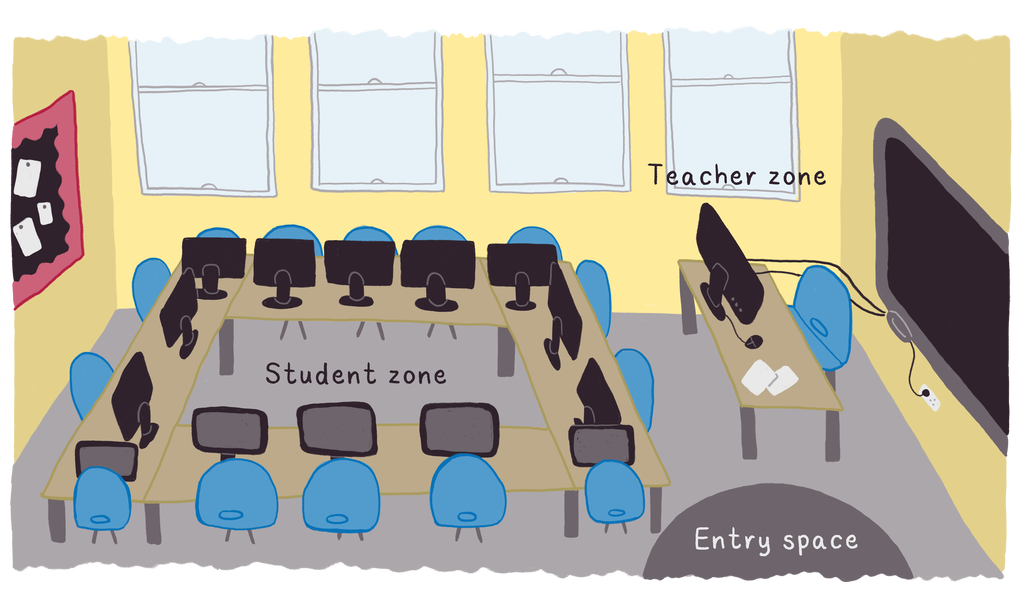
In this version of the boardroom, we are working within a computer-enabled environment. In the modern era, it is just as likely that your computers will be more mobile in the form of tablets or laptops and so on, but many classrooms remain with computers facing the outside of the room. If this is the case, you should seriously consider the boardroom, especially for coursework-based units of learning. The computer-enabled boardroom allows students to move from writing, reading and studying elements (receptive elements) in the middle of the room to writing elements (productive elements) in the outer computer area. Furthermore, the positioning of students around the outside allows the teacher to sit next to students in the middle as they review and comment on their work.
The zoned classroom
Take a look at the image below.
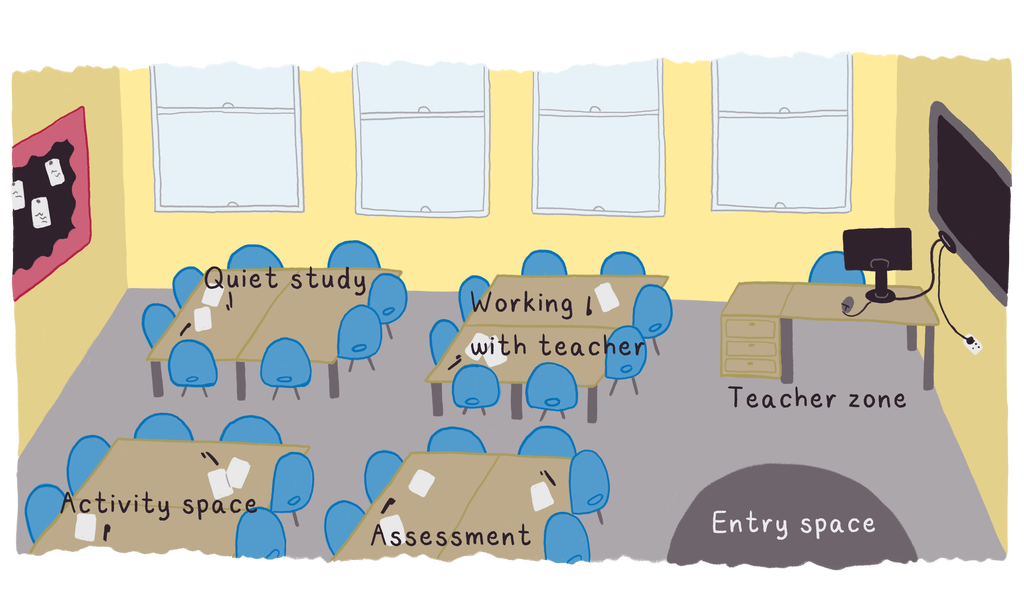
This classroom model is a very big step away from those that have come before. Even though it is structurally similar to the console classroom, this space is very different in terms of the assumed processes that will take place.
Firstly and most importantly, each area of the classroom is discrete in terms of the activity that will occur. For example, the quiet study space is an area for reading, writing, worksheets, etc. The activity space is an area for modelling, debate, pair work, and even games. The work with teacher space is used by students who are stuck or struggling. The assessment space is where students prove they understand the concepts, usually by writing answers to questions or by drawing, graphing or processing.
The biggest missing feature of this classroom is the assumption of the broadcast. Unless the teacher has already done the instruction in a previous lesson or if students have already studied the ideas for homework as a pre-loading/flipped learning task, there will be no group instruction in this classroom. It is worthwhile to ponder this. Consider all of the past lessons you have taught in a classroom or, if you’re not teaching yet, all of the classrooms you have experienced as a student. How many of them did not include a centralised element? I guess that, with exceptions for some individuals, the vast majority of your experiences will have included instruction. The zoned classroom does not assume an instructive period as part of the experience.
So, what does this leave? Well, we’ve already mentioned that the classroom might be relevant for previously instructed material and skills. It may also be relevant for a flipped-classroom model. It might even be relevant for a pre-exam experience such as a revision lesson.
There are some features to this classroom that need further development. Take a look at these statements:
- There is no (assumed) instruction.
- Students can move from area to area at a time to suit their needs.
- Students learn at their own pace.
- Every task can be repeated if necessary.
- Students work to a series of targets.
- Each target is an individual task set at a mastery standard for all.
- Mastery is the only ambition in the room.
Now, I am going to drop a bombshell here:
To be clear, the majority of my lessons meet the bullet points above.
But, crucially, my classroom has one big distinction from the zoned classroom and you can read about that in my very next blog post where I will write, in detail, how I format my PE classroom personally.
Thank you for reading.
James
%20Text%20(Violet).png)
